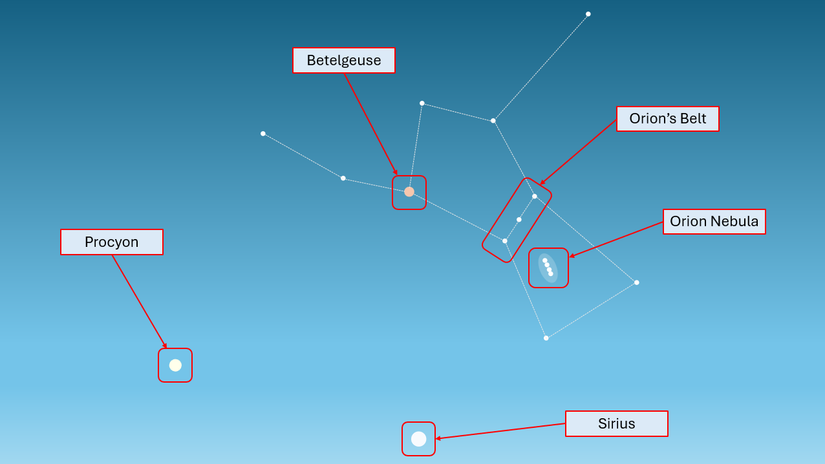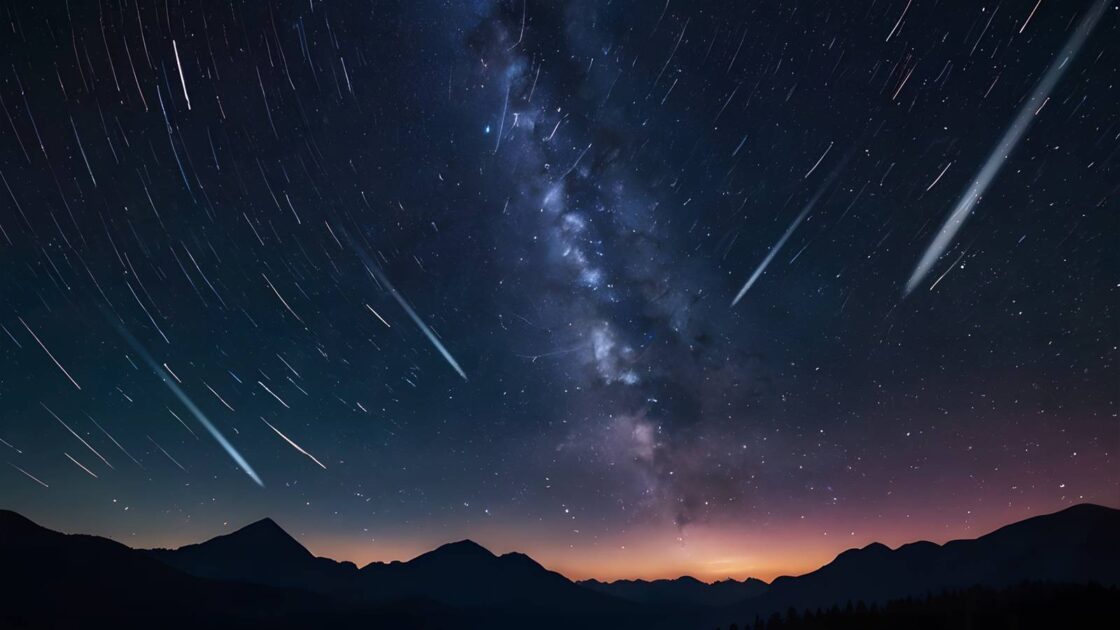We're into October, which means that the Orionid meteor shower—one of the few astronomical displays that can be reliably observed in both hemispheres—is happening right now. It offers many bright, fast meteors with long-lasting trains, so you won't want to miss it.
What and When Is the Orionid Meteor Shower?
The Orionid meteor shower is caused by small pieces of debris from Halley's Comet (also known as 1P/Halley) colliding with Earth's atmosphere. The comet appears in the sky every 74 to 76 years, and when it does, it's usually visible to the naked eye. It was last seen in Earth's skies in 1986, meaning we won't see it again until around 2061—so the annual Orionid meteor shower is a nice reminder of its existence.
Even though Halley's Comet is believed to have been discovered in 239 BC by Chinese astronomers, it was English astronomer and mathematician Edmond Halley who first recognized it as a periodic occurrence. As a result, he was awarded the honor of having it named after him.
Thanks to the speed of the Earth's orbital motion and the fact that the comet moves around the Sun in the opposite direction, the collisions between our atmosphere and the debris occur at around 148,000 miles per hour to create a stunning meteor display.
Although our planet only passes through Halley's trail once a year, we're treated to this spectacular meteor shower for over a month. In fact, it's already underway, lasting from Oct 2 to Nov 7, peaking on the night of Oct 21-22.
Where Should I Look for the Best Experience?
Even though the Orionid meteor shower is considered a reliable annual event, it's good to increase your chances by knowing where best to look.
To find the Orion constellation, which is said to represent the form of an egg timer, first look for the brightest star in the night sky, Sirius. Once you've identified that, look out for Procyon (the eighth-brightest star) and Betelgeuse (the tenth-brightest star). These three stars together form the Winter Triangle asterism, and Betelgeuse is in the upper-left shoulder of the Orion constellation from a Northern Hemisphere perspective (or the lower-right shoulder if you're in the Southern Hemisphere).

Orion is very easy to spot once you're looking in the right direction—the three central stars, known collectively as Orion's Belt, are one of its distinguishing features. If you have a dark sky or a pair of binoculars, you might be lucky enough to see the Orion Nebula (M42), which sits alongside Orion's Belt.
Even though many meteors will appear to come from this position, there's a good chance you'll see them all over the sky.
Finally, knowing where not to look is just as important. Avoid city lights, and use a light pollution map to see whether distant artificial lighting will likely hamper your view. Also, since the Sun sets in the west, you'll likely get darker skies in the east.
Do I Need Any Equipment to See the Orionid Meteor Shower?
The beauty of meteor showers is that you don't need any special equipment to see them. In fact, binoculars and telescopes are designed to narrow your field of view, so you're less likely to see any meteors if you look through them.
So, once you've located a safe stargazing spot, the only equipment you'll need is a blanket to set on the ground and a flask of something tasty. Even though meteor showers are infamously unpredictable, you can expect to see up to 20 meteors an hour with the naked eye during the Orionid peak, provided you find the right conditions and your vision has adjusted to the darkness.
Will the Moon and Weather Affect My View of the Sky?
One thing to bear in mind before you plan a night in the garden is how the Moon might impact your experience. Indeed, when our natural satellite is in or near its Full Moon phase, it can light up the sky, making some of the fainter meteors more difficult to see.
|
Date |
Orionid Meteor Shower Stage |
Moon Phase |
Moonset and Moonrise (New York, U.S.) |
Moonset and Moonrise (London, U.K.) |
|---|---|---|---|---|
|
Oct 2 |
Start of activity |
Waxing gibbous (79.4%), heading toward a Full Moon on Oct 6 |
The Moon rises at 16:28 and sets at 02:31 the following morning. |
The Moon rises at 17:04 and sets at 01:46 the following morning. |
|
Oct 21 |
Peak of activity |
New Moon (0.1%) |
The New Moon sets at 17:54 and doesn't rise again until 08:25 the next morning. |
The New Moon sets at 17:28 and doesn't rise again until 08:50 the next morning. |
|
Nov 7 |
End of activity |
Waning gibbous (95.4%), two days after a Full Moon on Nov 5 |
The Moon rises at 18:13 and is visible all night, setting at 10:34 the following morning. |
The Moon rises at 17:05 and is visible all night, setting at 11:28 the following morning. |
The biggest obstacle to shooting star success is something you can't control and the biggest thorn in any stargazer's side—clouds. So, be sure to check the weather forecast before you plan to spend the night outside!
Nevertheless, even if you do get undesirable weather during the best viewing times, you'll certainly catch some shooting stars at some point between Oct 2 and Nov 7.
How Can I Photograph the Orionid Meteor Shower?
Just witnessing the Orionid meteor shower should be enough to make your hair stand on end, but photographing a streak of dust burning up in our atmosphere can add an extra bit of joy to this addictive hobby.
The first thing you'll need is a stable tripod—such as the 64-inch K&F Concept—for super-sturdy shots and added comfort, especially if you plan to spend the whole night outside.
If you're near any artificial lights, they will flood your camera lens and severely disrupt your shot. If you can, also try blocking off any direct light from the Moon.
NightCap is a great app for capturing moving objects in the sky if you use an iPhone. Along with options for capturing the International Space Station and star trails, there's a Meteor Mode, which automatically detects any sudden, bright movements of light in the sky and saves them in your phone's gallery.
While similar apps are also available for Android phones, setting a five-second shutter timer so you don't accidentally wobble your shot will almost certainly do the trick if you shoot enough pictures.
Above all, whether you're out to watch or photograph the Orionid meteor shower this October, check the weather forecast, set aside plenty of time, experiment, and enjoy!
















































































































